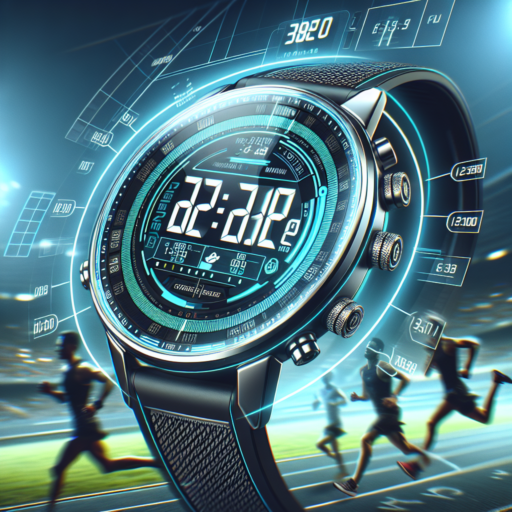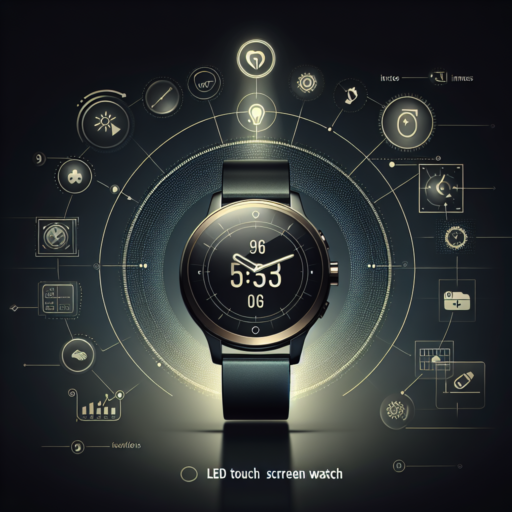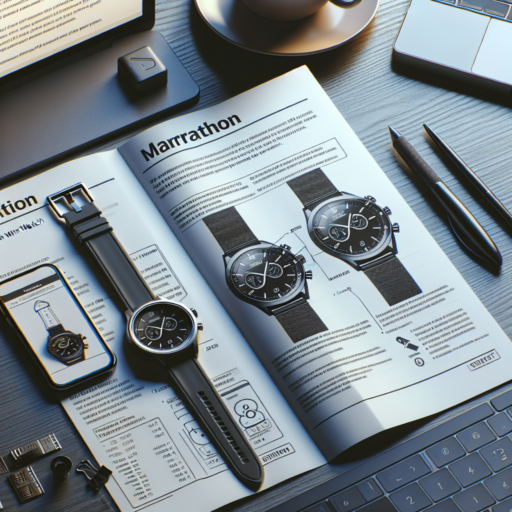Introduction to Changing Time on a Garmin Forerunner
Adjusting the time on your Garmin Forerunner is a straightforward process that ensures your device remains an accurate companion during your training sessions and daily activities. This guide provides a basic introduction to the necessary steps and considerations for effectively managing the time settings on your Garmin Forerunner. Whether you’re crossing time zones or adjusting to daylight savings, knowing how to change the time on your device is essential for all athletes and fitness enthusiasts alike.
The Garmin Forerunner series offers a range of models, each with its unique set of features and settings. Despite these differences, the process for changing the time shares many similarities across the board. Through this introduction, we will highlight the general approach to updating time settings, keeping in mind that navigation might slightly vary depending on your specific Forerunner model. It’s important to familiarize yourself with your device’s manual for model-specific instructions.
Before diving into the technical steps, it’s crucial to understand the significance of maintaining the correct time on your Garmin Forerunner. From ensuring the accuracy of your training logs to maintaining synchronization with global positioning systems (GPS), the correct time impacts various aspects of your device’s functionality. This introduction aims to equip you with the knowledge needed to manage your device’s time settings confidently, enhancing your overall user experience.
Step-by-Step Guide to Adjusting Time on Your Garmin Forerunner
Adjusting the time on your Garmin Forerunner is an essential task to ensure your training data accurately reflects the time of day, allowing for more precise tracking of your running or biking sessions. This guide provides straightforward steps to keep your device up-to-date, making sure you never miss a beat in your training schedule.
Accessing the Time Adjusting Settings
Begin by accessing the settings menu on your Garmin Forerunner. This can be done by pressing and holding the «Menu» button until the settings options appear on the screen. Scroll using the up or down buttons to find the «System» section, then select «Time» to access the time adjusting features. This section allows you to switch between automatic and manual time adjustments, catering to your specific needs whether you’re crossing time zones or adjusting for daylight saving time.
Manual Time Adjustment
For those who prefer a hands-on approach or are in areas where automatic time updates are not as reliable, manual adjustments are straightforward. Within the «Time» settings, select «Set Time Manually» to gain control over every aspect of your Forerunner’s time display. Here, you can adjust the hours, minutes, and even seconds, ensuring your device’s time matches your local time perfectly. Remember to confirm your settings by selecting «Done» to save your adjustments.
By following these steps, adjusting the time on your Garmin Forerunner can be a quick and painless task. Keeping your device’s time accurate is crucial for effective training analysis and maintaining synchronization with other devices. Whether you’re preparing for an upcoming race or just keeping track of your daily jogs, ensuring your Garmin Forerunner displays the correct time is integral to your training success.
Automatic vs. Manual Time Update on Garmin Forerunner: What You Need to Know
Deciding between automatic and manual time updates on your Garmin Forerunner can significantly impact your user experience. Garmin Forerunner users often weigh the convenience of automatic updates against the control and precision offered by manual adjustments. Understanding the nuances of each option is essential for optimizing your device’s performance and ensuring that your training schedules remain accurate.
Benefits of Automatic Time Updates
Automatic time updates utilize GPS signals to adjust your device’s clock to the correct time zone whenever you are on the go. This feature is particularly beneficial for athletes and travelers who frequently move across different time zones. The main advantages include:
- Convenience: Your device updates its time without any input needed from you, making it one stress less, especially when traveling.
- Accuracy: GPS-based time adjustment ensures your device’s time is always exact, supporting precise record-keeping of your activities and schedules.
Choosing Manual Time Updates
On the other hand, manual time updates offer users complete control over their device’s time setting. This option is ideal for those who are in areas with weak GPS signals or prefer to manage their settings personally. Key points to consider include:
- Control: You determine exactly when and how your time is set, allowing for adjustments based on personal needs or preferences.
- Reliability: In locations where GPS signals are unreliable, manual updates ensure your device’s time remains accurate.
How to Set Your Garmin Forerunner to Update Time Automatically
Ensuring your Garmin Forerunner updates its time automatically is essential for accuracy in your training sessions and daily routines. Garmin devices are designed with features that synchronize your watch’s time based on the GPS data they receive or through a connected smartphone. This function not only provides precision but also convenience, especially for those who travel across different time zones frequently.
Activating the Auto Update Time Feature
To enable your Garmin Forerunner to update its time automatically, first, ensure that your device is connected to your smartphone via Bluetooth and that the Garmin Connect app is running. Navigate to the Settings menu on your Forerunner, select the System option, and then find the Time section. Here, you will see an option to set the Time to Auto Update. Selecting this assures that your device’s time will adjust itself based on the GPS data it collects during outdoor activities or through the time provided by your connected smartphone.
Ensuring Successful Time Synchronization
For the auto-update feature to work flawlessly, there are a couple of things to keep in mind. First, regular synchronization with the Garmin Connect app ensures that your device receives the correct time updates. Make sure that your Forerunner is within the Bluetooth range of your phone for the most efficient data transfer. Additionally, initiating a GPS activity will prompt your device to capture GPS data, which includes accurate time information based on your current location. This is particularly useful if you’ve traveled to a new time zone and wish for an immediate time update.
By setting your Garmin Forerunner to automatically update its time, you can focus more on your training and less on the small, yet important, details like ensuring your device’s clock is accurate. Remember, keeping your device connected and synchronized with your smartphone and occasionally engaging the GPS will keep your Forerunner’s time precise and dependable.
No se han encontrado productos.
Troubleshooting: Fixing Time Update Issues on Your Garmin Forerunner
Encountering time update issues on your Garmin Forerunner can disrupt your training plans and daily schedules. Fortunately, with a few troubleshooting steps, you can get your device back on track. Understanding the causes and solutions to these problems can save you time and ensure your device remains a reliable training partner.
Checking for Firmware Updates
One common cause of time update issues on your Garmin Forerunner is outdated firmware. Garmin frequently releases updates to improve functionality and fix bugs. Ensuring your device is running the latest firmware is a critical first step in troubleshooting. Connect your device to the Garmin Express application on your computer to check for and install any available updates.
Verifying GPS Signal Strength
Another crucial factor in maintaining accurate time is the GPS signal strength. If your Garmin Forerunner cannot secure a strong GPS signal, it may struggle to update the time correctly. To enhance signal reception, ensure you are in an open area away from tall buildings or dense forest cover when syncing time. Waiting a few extra minutes for your device to acquire a satellite signal before starting your activities can also help resolve time update issues.
Resetting Your Garmin Forerunner: If firmware updates and GPS signal improvements do not rectify the time update issue, a soft reset may be necessary. This process can refresh your device’s internal systems without erasing your data, potentially resolving any glitches preventing time synchronization. You can usually perform a soft reset by holding down the power button for several seconds until the device restarts. For specific models, refer to your Garmin Forerunner’s manual for detailed reset instructions.
Benefits of Correct Time Settings in Training and Daily Use of Garmin Forerunner
Ensuring the correct time settings on your Garmin Forerunner has a multitude of benefits, significantly enhancing the accuracy and usability of the device for both training and daily activities. The precision that comes from accurate timekeeping is key to optimizing your fitness routine and ensuring your daily schedule runs smoothly. Let’s delve into the specific advantages that correct time settings can provide.
Firstly, accurate time settings are crucial for effective workout tracking. The Garmin Forerunner relies on precise time information to accurately record the duration of your activities, rest periods, and intervals. This level of accuracy is vital for tailoring and improving your training regimen. With correct time settings, your Forerunner can provide valuable insights into your performance, facilitating more focused and efficient training sessions.
Moreover, integrating your Garmin Forerunner into your daily life becomes seamless with correct time settings. From alarm functions to reminders, your Forerunner can help manage your day-to-day schedule efficiently. Accurate time ensures that you are always on top of your tasks, meetings, and events, thereby improving time management and productivity. In addition, correctly set time enhances the syncing process with other devices and apps, ensuring all your data is consistently up-to-date.
Frequently Asked Questions (FAQs) About Garmin Forerunner Time Settings
Configuring the time on your Garmin Forerunner is a crucial step to ensure that your workouts are recorded accurately, making it a common concern among users. This section aims to address some of the most frequently asked questions concerning time settings on these devices. Understanding how to adjust and troubleshoot time settings can enhance your training experience and ensure you get the most out of your Garmin Forerunner.
How to Set Time on Garmin Forerunner?
Setting the time on your Garmin Forerunner can be done effortlessly. Most models synchronize the time automatically when connected to a GPS signal or paired with a smartphone. To manually adjust the time, navigate to the device settings, select Time, and choose Set Time. From there, you can set the time manually or opt for it to sync automatically with GPS.
Why is my Garmin Forerunner Showing the Wrong Time?
If your Garmin Forerunner is displaying the incorrect time, it typically indicates that it has not been synced properly with a GPS signal or your smartphone. This can occur for several reasons, including being in a location where GPS signal is weak or if the device has not been connected to a smartphone for extended periods. To resolve this, try syncing your device with the Garmin Connect app or securing a GPS signal outdoors.
Advanced Tips: Ensuring Accurate Time During International Travel with Garmin Forerunner
Traveling across different time zones can be exhilarating yet challenging, especially when it comes to keeping track of time. The Garmin Forerunner series offers a plethora of features designed to ensure that you always have the correct time, no matter where you are in the world. Here, we explore advanced tips to leverage the full potential of your Garmin Forerunner during international travel.
Automatic Time Adjustment
First and foremost, ensuring that your Garmin Forerunner’s automatic time adjustment feature is enabled is crucial. This feature utilizes GPS data to automatically update your device’s clock to reflect the local time of any new location you visit. To activate this, navigate to the system settings and select the ‘Time’ or ‘Clock’ option, then toggle the ‘Automatic Time Adjustment’ setting to ON. This preemptive step is indispensable for travelers who frequently move across time zones and desire seamless timekeeping.
Utilizing World Clock Function
For those who need to keep track of time across multiple locations, the Garmin Forerunner’s World Clock function is invaluable. This feature allows you to add various cities to your watch, making it simple to glance at your wrist and see the current time in another part of the world. Whether you’re coordinating with colleagues in London or checking if it’s a reasonable hour to call family in Sydney, the World Clock ensures that you’re always well-informed, avoiding any time-related faux pas.
In summary, the Garmin Forerunner series is equipped with sophisticated functionalities designed to provide accurate local time updates automatically and facilitate global time management. By mastering these advanced settings, you can enhance your international travel experience, ensuring you remain punctual for every adventure that lies ahead.
Garmin Forerunner Time Change: Avoiding Common Mistakes
When it comes to adjusting the time on your Garmin Forerunner, it’s more than just pushing a few buttons. Various models of the Garmin Forerunner series have their own specific steps, which can sometimes lead to errors if not followed precisely. To ensure your device displays the correct time, especially after travelling through different time zones or due to daylight saving changes, it’s essential to understand the proper way to make these adjustments.
Understanding Your Forerunner Model
First and foremost, it’s vital to recognize the model of your Garmin Forerunner. Each model may have unique menus and settings, impacting how you navigate through them to change the time. For instance, newer models typically sync time automatically when connected to GPS or a smartphone, eliminating the need for manual changes. Before attempting to alter your device’s time settings, ensure you’re familiar with its particular capabilities and restrictions.
Turning on GPS to Update Time
Many Garmin Forerunner users aren’t aware that simply enabling the GPS and waiting for it to sync can update their device’s time to the current time zone automatically. This is often the simplest method to get accurate time without manual adjustments. After activating your Forerunner’s GPS outdoors, give it a few moments to establish a connection. It’s crucial, however, to ensure you’re in an open area with a clear view of the sky for the best GPS signal reception.
While these steps may seem straightforward, overlooking the specific requirements of your Garmin Forerunner model or failing to connect properly with GPS can result in incorrect time display. A common mistake is forgetting to enable the automatic time update feature or not allowing the watch sufficient time to sync. Keeping these tips in mind can help avoid such pitfalls and ensure that your Forerunner always shows the right time, no matter where you are in the world.
Conclusion: Maximizing Your Garmin Forerunner’s Potential by Managing Time Effectively
In wrapping up, leveraging the full capabilities of your Garmin Forerunner hinges crucially on proficient time management skills. This advanced tool provides a myriad of features designed to help users not only track their fitness progress but also enhance their daily productivity. By understanding how to seamlessly integrate this device into your routine, you can unlock its full potential, making every second count towards achieving your personal and fitness goals.
Employing effective time management strategies with your Garmin Forerunner entails setting realistic goals, utilizing its customizable alerts for reminders, and analyzing tracked data to refine and adjust your plans. The beauty of the Garmin Forerunner lies not just in its ability to monitor your physical health, but also in its capability to act as a personal assistant, reminding you to balance wellness with the rest of your daily obligations.
Key to success is the harmonious balance between technology and user intent. Your Garmin Forerunner is much more than just a timepiece or a fitness tracker; it is a comprehensive tool that, when used wisely, can significantly contribute to more disciplined time management and, ultimately, a more fulfilling lifestyle. Embrace the technology, tailor it to your life’s rhythm, and witness how it transforms your day-to-day efficiency.




